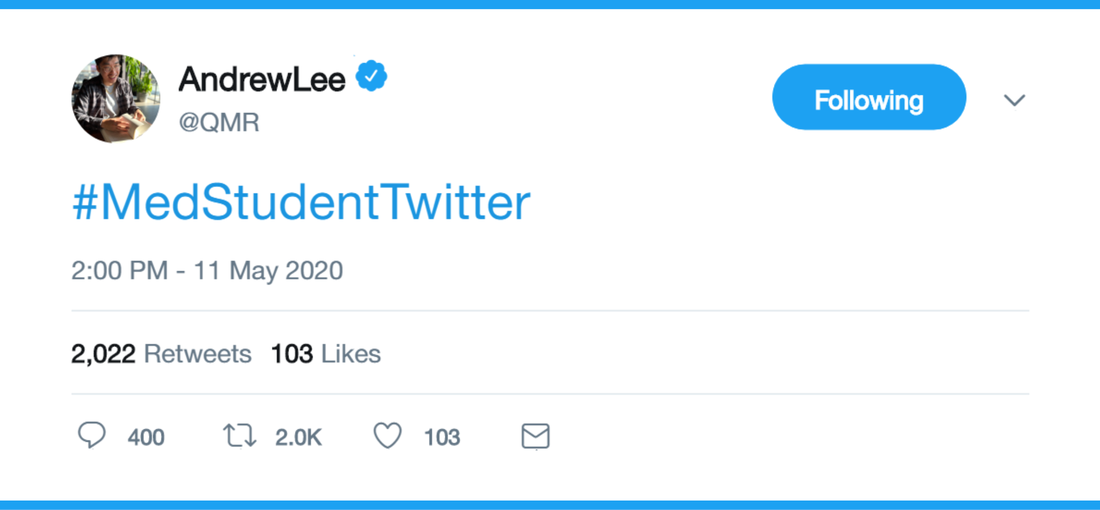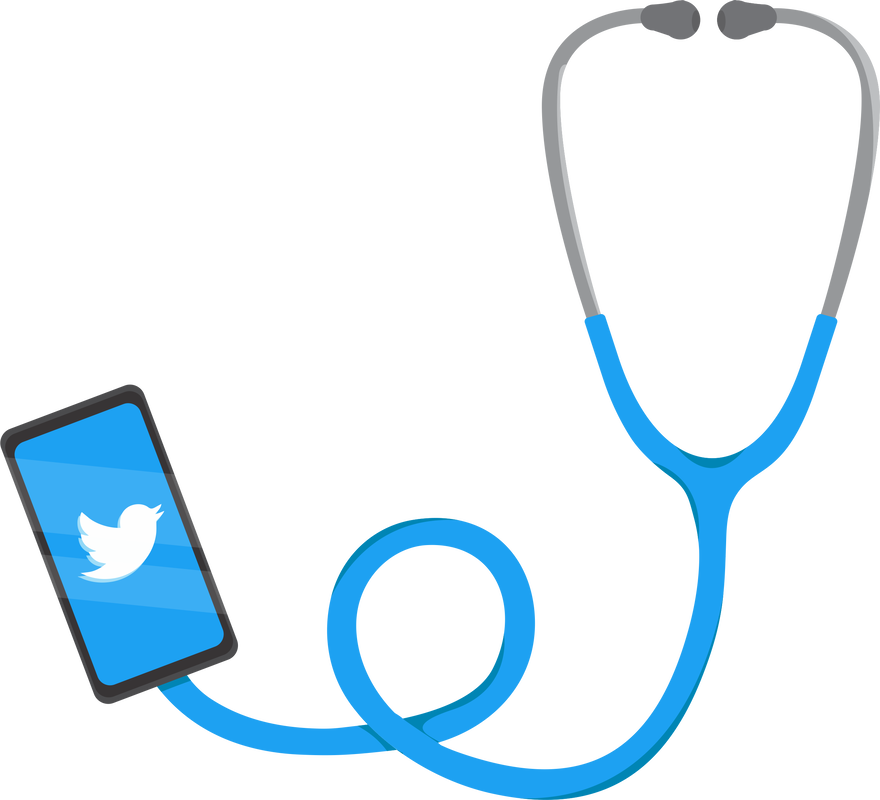|
By Andrew Lee, Meds '22
Gone are the days when you tweeted about how boring second period calculus was, or showed the world your cafeteria lunch - #blessed. Twitter has gone through a revival since we last knew it, now becoming a forum for academic discussion, debate and trolling. #MedTwitter has taken the chirpy website by storm, amassing hundreds and thousands of tweets per day from all corners of the globe. Whether it be tweetorials or people straight meme-ing it, twitter has truly changed the way people in medicine interact with research, colleagues and the public. 1. Bite-sized information in real-time Twitter is not for the faint of heart, it is a constant barrage of information. However, in 140 characters people are forced to be concise. The only atrocity is verbosity. One can receive up to date information from reputable sources at their fingertips. With trending hashtags and the opportunity to go “live” twitter has built an ecosystem conducive to digestible information. To optimize your twitter experience you can set up lists, follow certain hashtags and obviously follow your favourite influencers. Twitter is the Costco sampler of the internet. 2. Breaking down barriers with mentors and idols Academia has always been inaccessible, the coveted “cool kids table” in the cafeteria. However, twitter has been able to bridge the gap between the nerds and jocks. Liking, replying and retweeting your idol’s tweets is an opportunity to be seen. There is a low threshold to echoing the voices of others on this platform and if you appear in someone’s feed enough, they might just send a follow your way. It’s like having your professors and heroes on Facebook, but in a more professional manner. This is a great way to connect with people you find interesting or inspiring and it breaks down the intimidation of sending a formal email. Not to mention, this humanizes your idols. You learn about their quirks and interests and you can see their “likes”. Why yes, professors also enjoy the occasional meme. 3. Subcultures Like any good social media platform, subcultures exist. From #gaymedtwitter to #medhumchat you can explore niche areas of medicine that might not be prominent at your home institution. This allows you to connect with people around the world who share marginalized identities or specific interests tangential to medicine! There is so much to offer and medicine is so much more than… well medicine. Look hard enough and you will find the #HotDogIsASandwichDoctorsClub, even though that opinion is straight up wrong. 4. Being vulnerable Although Twitter has become a professional forum, it has still retained some of the personal nature of what we once knew. From your tough days to angry rants, many physicians can be quite vulnerable on the platform. Especially in the era of COVID-19, we see across the board an unprecedented vulnerability displayed by colleagues. I for one, believe that this is healthy for medical culture. It is important to show our colleagues, learners and society at large that physicians are prone to similar stressors (if not more) as everyone else and sometimes, life is just plain ol’ hard. Thank you for all the doctors out there who have shown us that being vulnerable is not a weakness, but a strength. 5. Meme-ing it From Dr. Glaucomflecken our resident eyeball enthusiast and tiktoker, to sassy memes by accounts by the self-proclaimed monikers such as HotGirlMed or BlondeBoy3000MDToBe. The anonymity that Twitter provides can be an outlet for disgruntled medical students around the globe. Dark humour has always been a part of medicine - this is just the modern form.
0 Comments
Leave a Reply. |
In This Issue:
All
|



 RSS Feed
RSS Feed
